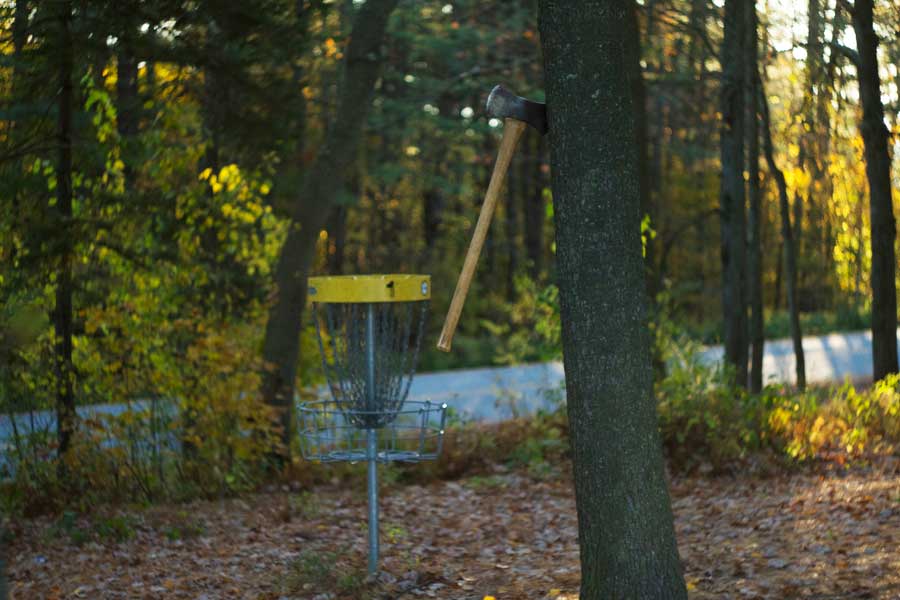Sustainable logging coming for JSC trees
One of JSC’s targeted trees; ax courtesy of the author
JSC has hired local foresters to log in a sustainable manner in order to improve forest health. Dead, dying and mature trees will be selected by trained professionals to be removed so that new growth can take place, in turn creating a sturdier planting of trees. Dean of Administration Sharron Scott explained how the college went about finding a forester and how the forester will select trees to be logged.
“That will involve us going through and identifying the mature trees that we have here on campus that can be removed,” Scott said. “By removing the mature trees, it actually allows the rest of the forest—the undergrowth—to get more light, air and nutrients, and to be able to grow up more rapidly. So that’s the project that we’re working on right now. We expect to be doing forestry activity for about one hundred acres here on campus. We’re in the process right now of marking the trees that will be removed. We expect that the marking process will be complete by about Oct.17. And then shortly after that we would issue an RFP to area foresters and have them bid on the project to remove the trees from our property, the idea being that the trees themselves would be removed sometime between mid-December and mid-March. The timing is very much up in the air, because it depends on how soon the ground freezes. It has to be a really solid freeze so that we don’t damage the environment around the trees, or damage any of our trails. So if it doesn’t get cold enough, we won’t be able to do it this year, because we don’t want to damage our existing trails. But if it’s cold enough, like last year—in fact, it would have been cold enough for almost the entire winter—then we’ll be able to get that project underway by sometime around mid- to late-December.”
There will be little forest floor damage, since the forester will only be working when there is a heavy frost. Stumps will not be uprooted in order to protect the forest floor as well. The trees that are cut will be cut six inches above the ground. The stumps will be left in place. The lumber that is logged will go towards the forester as a partial payment for the logging.
“The RFP is two-fold,” Scott said. “One, it’s to hire someone to remove the trees. But essentially by doing that, they are agreeing to buy the trees from us. So it’s a sale of trees. One exciting thing that we think may be happening is that an old canal book called the Lois McClure is being restored in the Chittenden County area, and they need a new mast for it…so we’re hoping that one of our really tall Spruce trees will become the mast of the Lois McClure and will have a long life after this. [Those involved] approached the state and asked if there was some place [the state] knew [to] get a full-grown spruce tree. And they thought of us, which was pretty cool. I’m pretty excited about that.”
Scott explained what makes a tree mature enough to be logged, the areas of campus that will be logged and how long the project should take.
“The mature tree is identified based on the girth, so the dimensions of the tree itself, and then the age of the tree,” says Scott. “We’re working with the department of forests and recreation, so the state of Vermont. The state forester of Lamoille County has been in our woods…he’s actually spent many hours here identifying which trees would be considered mature, making sure that the ones that are being selected will really help the forest become a better place… 100 acres will be logged, starting back by the rugby field, back by 100C, coming all the way to physical plant. There will be some logging and forestry activities in the zone back behind the fields and the frisbee golf course. There are a lot of dead trees back there, so by going there and removing some, it will help make that a much more sturdy planting of trees… The project should take four to six weeks, according to the forester. They bring in a lot of equipment and they have to just hit it hard when the weather is right.”
Max Van Wie joined the Basement Medicine staff in Spring 2014, assuming the position of staff reporter.



